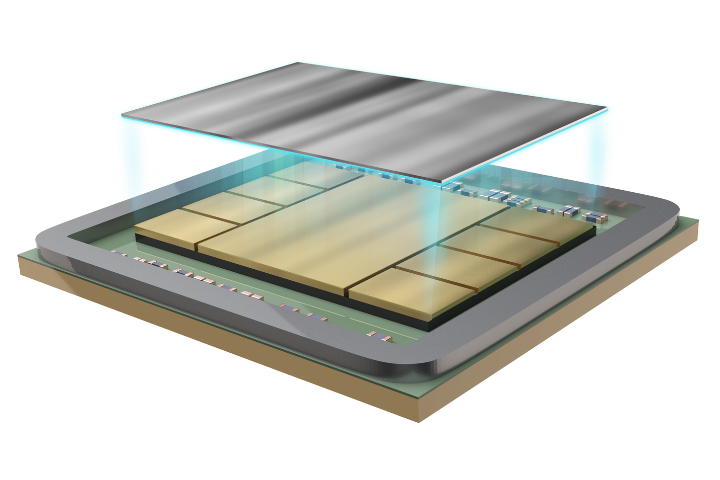The rollout of wireless communication networks began back in 1979 when Nippon launched the first commercially automated mobile network, known today as the first “Generation” (1G). It launched in Tokyo, but soon covered the whole population of Japan.[1] (The car phones of the 1960s using Improved Mobile Telephone Service and Finland’s Autoradiopuhelin network in the 1970s are considered as 0G technology. [2])
The next iterations included 2G in 1991, 3G in 2001, 4G in 2009, and 5G in 2019 (roughly 10-year increments). This is not representative of the total availability of 5G coverage across the U.S., but for a sense of 5G usage, in 2022 Q1 Ookla reported that among users of 5G-compatible devices on the three networks, the following percentages are of users who spent the majority of their time on 5G:
- T-Mobile – 65.0%
- AT&T – 49.4%
- Verizon Wireless – 28.2%
It is safe to say that 5G is not ubiquitous.
But it is never too early to look ahead. For the possibilities of 6G think: holographic communications, artificial intelligence (AI), and visible light communications.
A research team of 12 representing the Korea Advanced Institute of Science and Technology (KAIST), the Korea Advanced Nano Fab Center (KANC), Korea Atomic Energy Research Institute (KAERI), and the Gwangju Institute of Science and Technology (GIST), has published its research (ACS Nano 2022, DOI: 10.1021/acsnano.2c00334) indicating that two types of indium– and gallium-containing high-electron-mobility transistors (HEMTs) could be advantageous in the transition to 6G.
“Two types of indium- and gallium-containing high-electron-mobility transistors (HEMTs) could be the advantageous in the transition to 6G.”
6G will require much higher radio frequencies (RF) than 5G. 5G primarily uses sub-6GHz as well as 80-140GHz RF bands; 6G will require RF above 140GHz in addition to non-RF bands (e.g., optical). The 6G devices operating on these higher frequencies will access these higher portions of the RF spectrum—allowing for larger and faster data transfers (8K or 16K video in mere seconds)—but will have to balance that with low power (very high frequency + very high power = a bag of popcorn … popped in your hand). Although chips in the past have been fabricated with silicon, these same circuits cannot easily achieve the higher RF to be used in 6G. Circuits with indium gallium arsenide (InGaAs) however can reach these higher frequencies because the electrons can more easily move inside them.
In addition to the team from Korea, researchers at IBM are looking to blaze the new path for 6G, and Ericsson has a webpage dedicated to “6G and the journey there.”
Although most communications pundits point to 2028 and beyond for implementation of a 6G mobile communication system, it is exciting to know that indium will be part of the transition. It was 70 years ago this past March that Texas Instruments (TI)—which had purchased a license to the Bell Labs’ “circuit element utilizing semiconductive material” technology—began its transistors and related semiconductor devices business. Although the standard for soldering applications at the time was off-eutectic tin-lead (SnPb), TI approached Indium Corporation Founder and President Dr. William Murray for a new solder that melted lower than SnPb. Dr. Murray recommended a new lead-free indium-tin (InSn) alloy, which has been a staple in Indium Corporation’s portfolio of proven products in the seven decades since.[3]
Authored by MarCom Specialist Christian Vischi.
References and Resources:
[1] Airbus Secure Communications, “The History of 5G Technology.” https://securecommunications.airbus.com/en/meet-the-experts/the-history-of-the-5g-technology
[2] Chan, Ai Sin. “A brief history of 1G mobile communication technology.” July 24, 2018. https://blog.xoxzo.com/en/2018/07/24/history-of-1g/
[3] Mackie, Andy. “Indium Corporation: Igniting an Electronics Materials Renaissance in Upstate New York.” IEEE Power Electronics Magazine. June 2020. p. 76. Retrieved May 24, 2022. https://www.nxtbook.com/nxtbooks/ieee/powerelectronics_june2020/index.php?startid=77#/p/76
“List of mobile phone generations.” Wikipedia. Retrieved May 24, 2022. https://en.wikipedia.org/wiki/List_of_mobile_phone_generations



